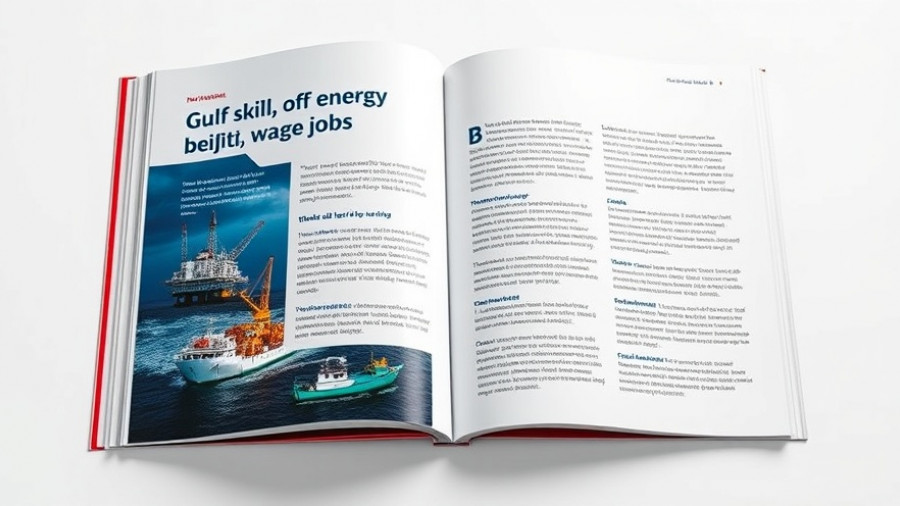
Gulf of America: A New Era of Energy Leadership
The National Ocean Industries Association (NOIA) has embarked on a groundbreaking initiative to showcase the Gulf of America as a powerhouse in offshore energy. The newly released Gulf of America Forward report emphasizes the region's pivotal role in the global energy landscape, stressing its status as a vital source of innovation and economic strength for the United States.
As Erik Milito, President of NOIA, asserts, the Gulf of America is not just a legacy asset but rather a strategic platform for America’s energy leadership. With the global demand for energy escalating due to factors like population growth and industrial expansion, the Gulf stands ready to meet these challenges. The region’s remarkable combination of world-class reserves, advanced technology, and a skilled workforce positions it perfectly to deliver lower-emission energy to Americans and allies alike.
Why Gulf of America Matters
The Gulf produces over 15% of the U.S. oil, often considered a benchmark for safe and efficient offshore energy practices. With the rapidly increasing global demand for oil and natural gas, this energy hub not only supplies the nation but offers stability and support for allies across the globe. As oil consumption continues to grow, particularly from developing industries, the Gulf's role in providing dependable, lower-emission energy becomes increasingly critical.
Boosting Economic Growth and Job Creation
The economic implications of the Gulf's offshore industry are substantial. Supporting over 400,000 jobs, the Gulf contributes more than $36 billion annually to the U.S. GDP. This financial influx is essential not just for the workers directly involved but also benefits communities nationwide. The revenues generated from the Gulf's energy production fund vital national programs, including the Land and Water Conservation Fund, which supports parks and public lands vital for American recreation and conservation efforts.
Innovating for the Future: Embracing New Technologies
Beyond traditional hydrocarbons, the Gulf of America has the potential to be at the forefront of emerging energy technologies such as carbon capture and storage, offshore wind, and hydrogen development. NOIA’s report emphasizes the need for robust policies that encourage investment in tools that support these next-generation solutions. The right regulations can unlock the Gulf’s vast potential and elevate it as a center for innovation driven by renewables.
Environmental Stewardship and Responsibility
The Gulf's operations have made strides in producing some of the lowest-carbon barrels globally. Industry-leading technology and years of environmental progress have made this possible. Initiatives like the Rigs to Reefs program, which repurposes decommissioned platforms into marine habitats, exemplify how energy production can go hand-in-hand with environmental responsibility. By fostering ecosystems rather than destroying them, the Gulf presents itself not just as an energy producer but as a steward of marine health.
Energy Independence and National Security
The Gulf of America is crucial for U.S. national security, anchoring the nation’s energy independence. Its ability to produce energy domestically insulates the U.S. from global supply disruptions and adversarial foreign regimes. Having a reliable source of energy strengthens the entire nation, ensuring that allies receive secure energy without relying solely on imports from less stable regions.
In summary, the Gulf of America Forward initiative represents a pivotal point in recognizing the Gulf as a driving force in the offshore energy sector. With advances in technology and a commitment to sustainability, the future looks bright for this vital resource. For stakeholders, policymakers, and citizens, engaging with the Gulf's opportunities is essential for cultivating a prosperous energy future.
 Add Row
Add Row  Add
Add 




Write A Comment